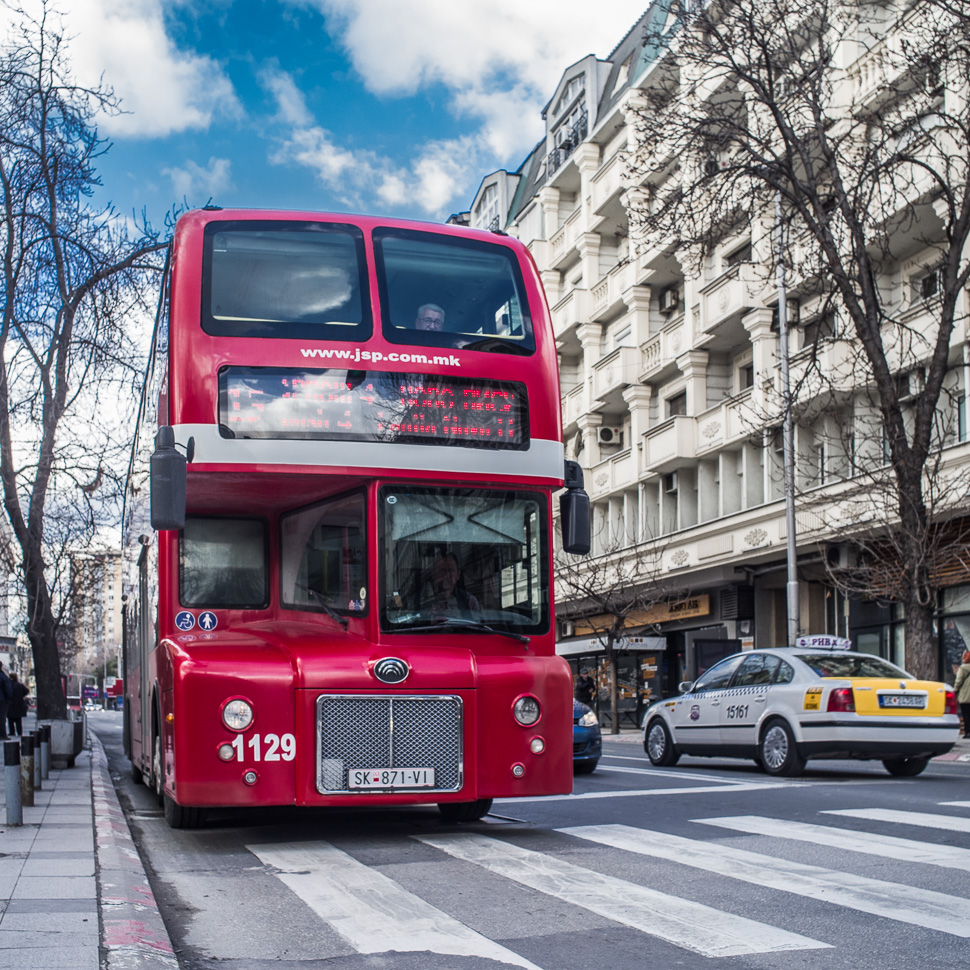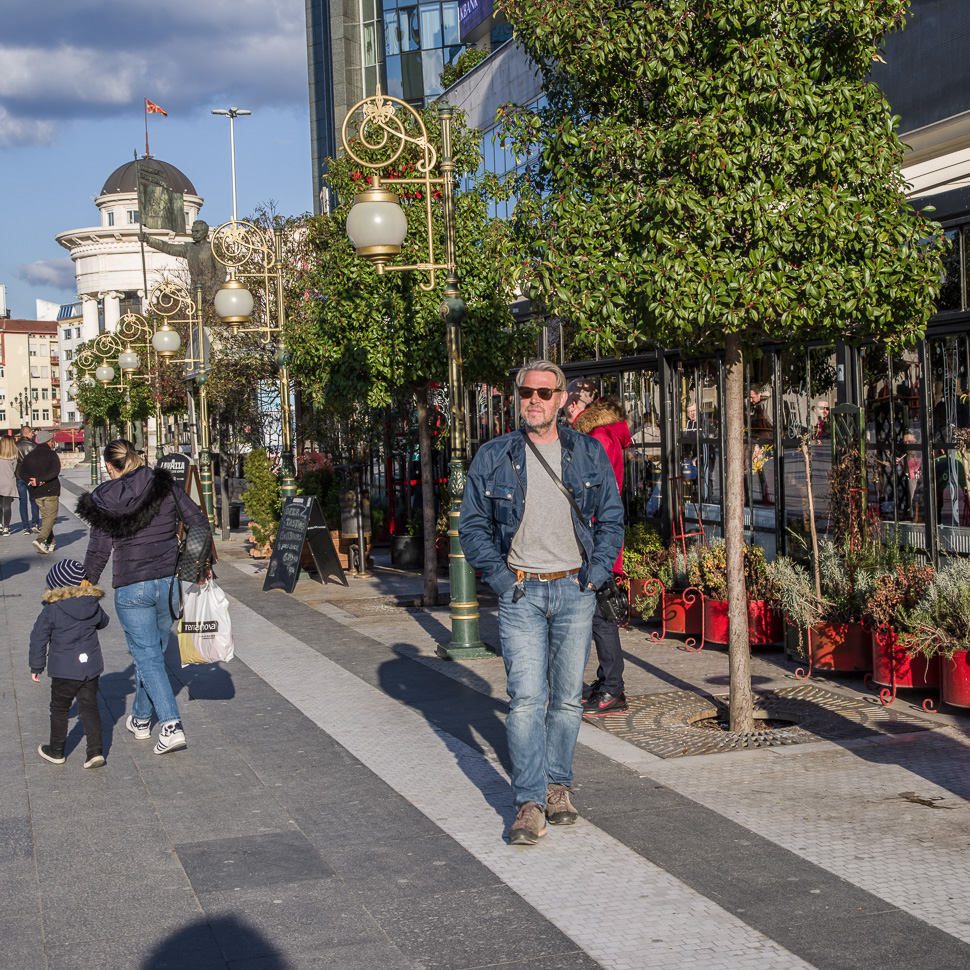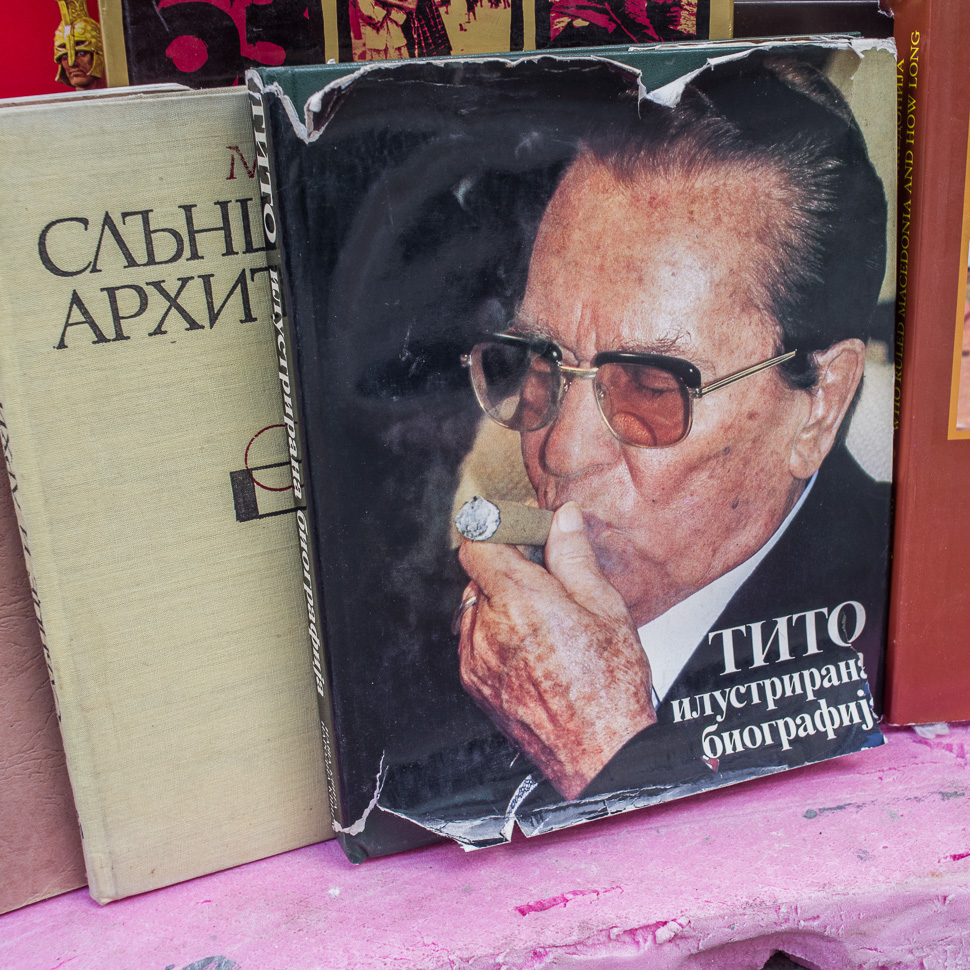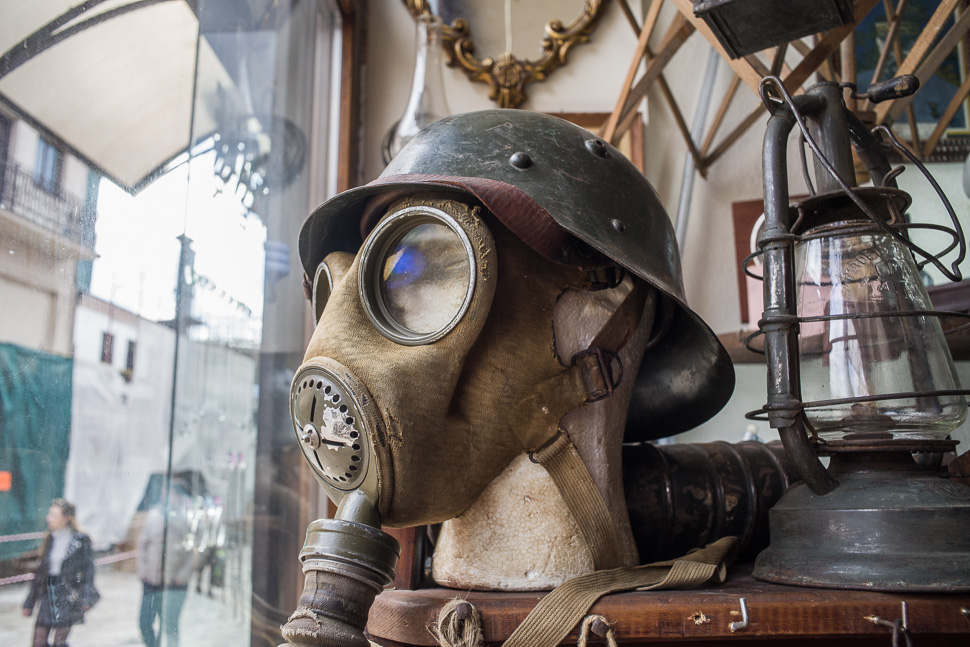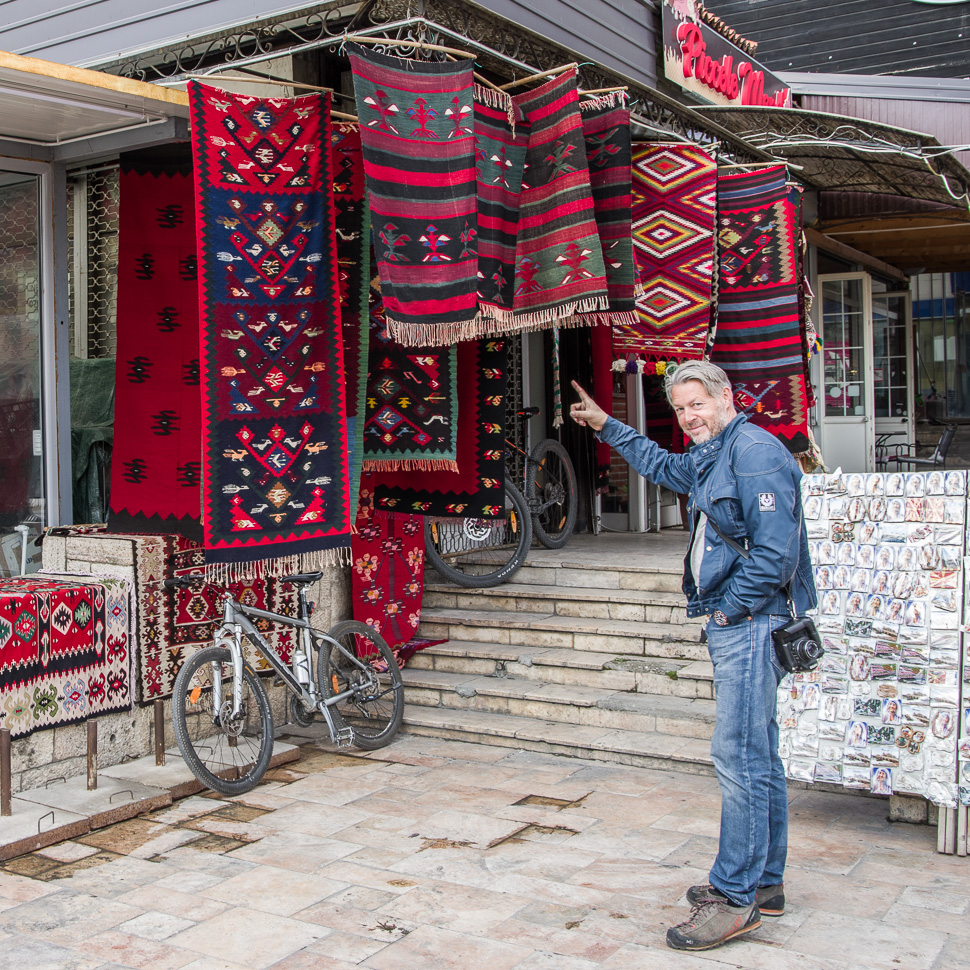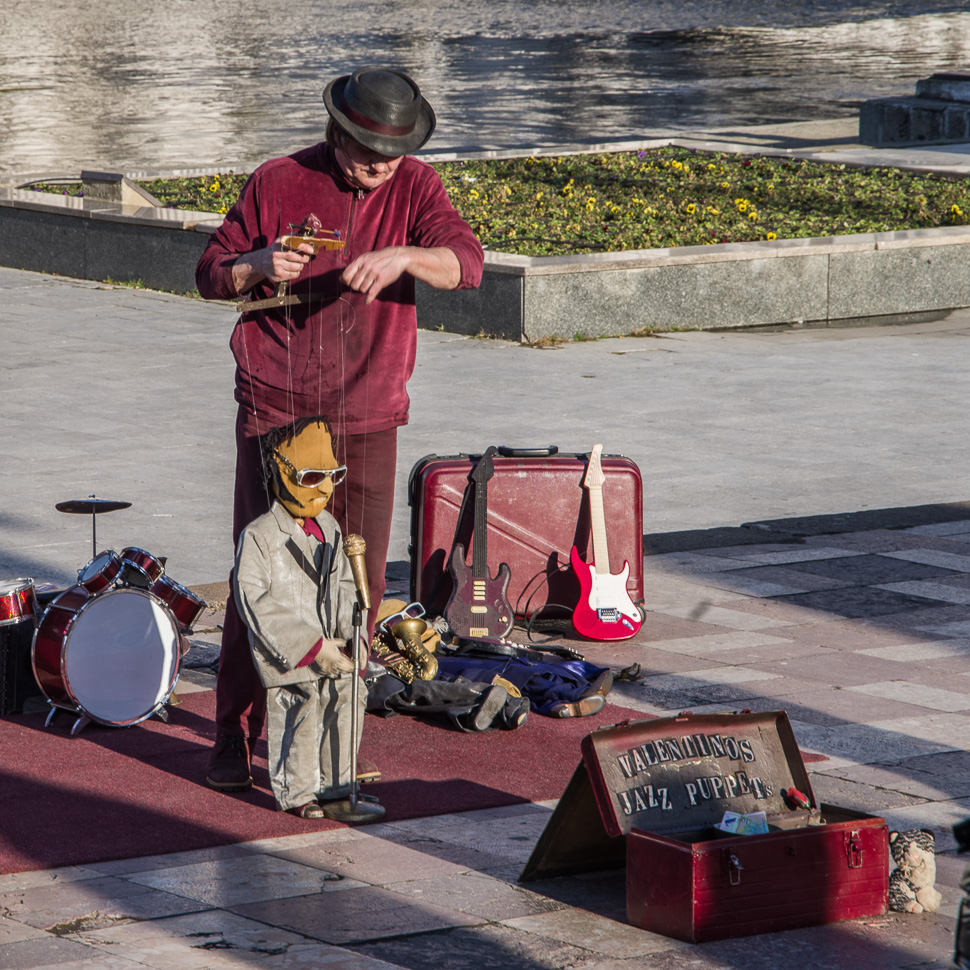We had reached Skopje, the capital of (North) Macedonia, where we joined a guided tour to learn more about this city. Maybe something we should do more often, as you get to ask all your questions, which doesn’t work with a travel book.
When we had reached Skopje and were looking for a parking, we had some adventure. We had hoped to find a parking in the area of a stadium. When we saw that also here you have to pay, we decided to leave the area but didn’t find a way out which was high enough for us. At the end we had to use the one way street on which we came in, driving in the wrong direction! Finally, we ended at the outskirts of Skopje in a good area where we parked at the street with a supermarket around the corner. (41.983513,21.484574)
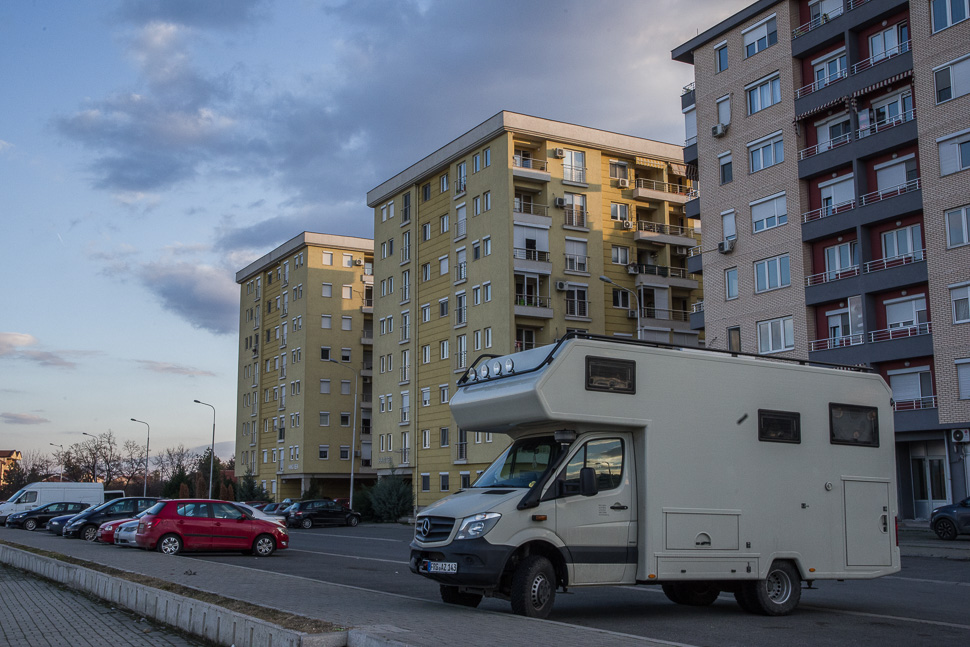 |
| Parking for the Night |
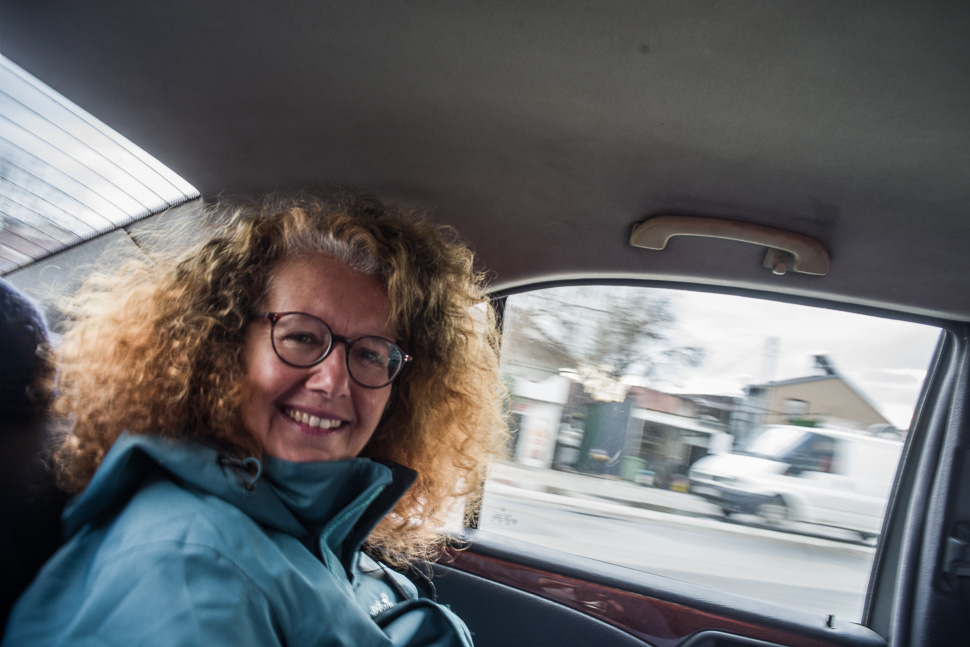 |
| Taking a taxi into town |
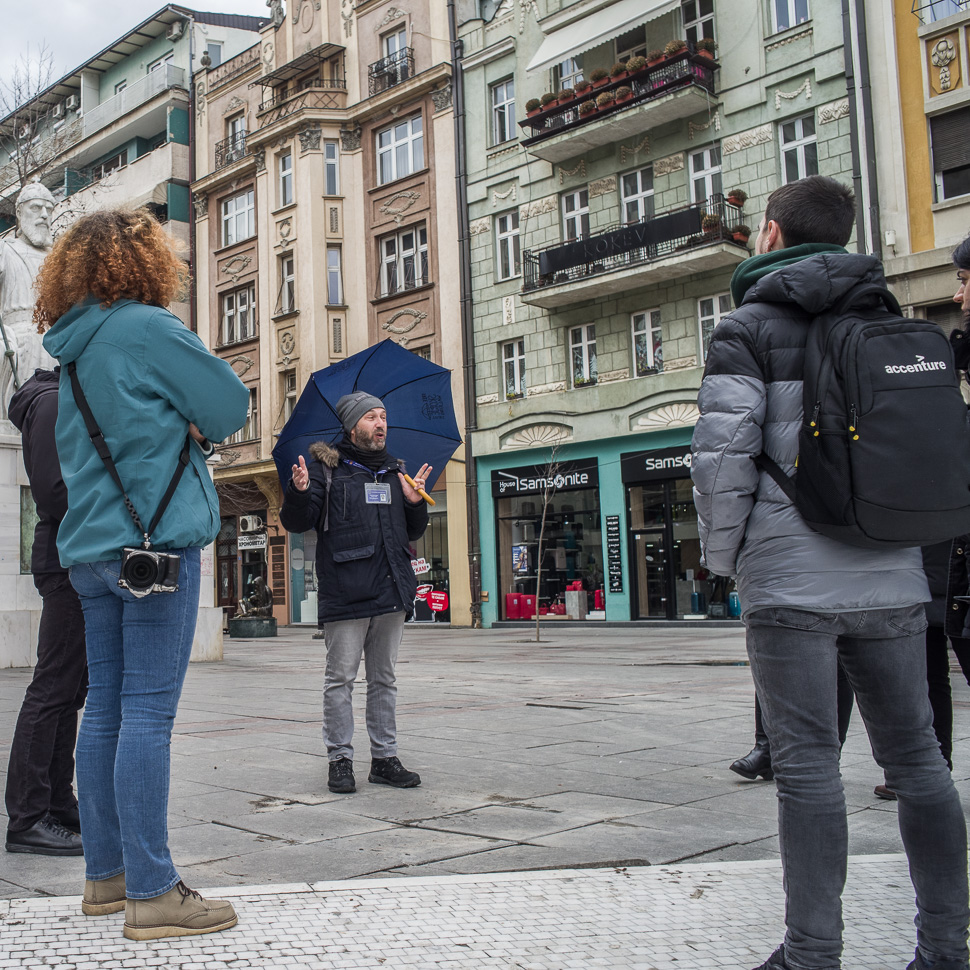 |
| Vasko, our guide from Free Skopje Walking Tours |
At the meeting point for the tour we met Vasko and some other tourists from Spain, Germany and the USA. Vasko showed us Skopje during a 3-hour walk. He spoke very good English and explained a lot about the history and the sights we saw, giving us tips of what to do or visit after the tour. If you go to Skopje, I highly recommend joining him:
Free walking tour in Skopje.
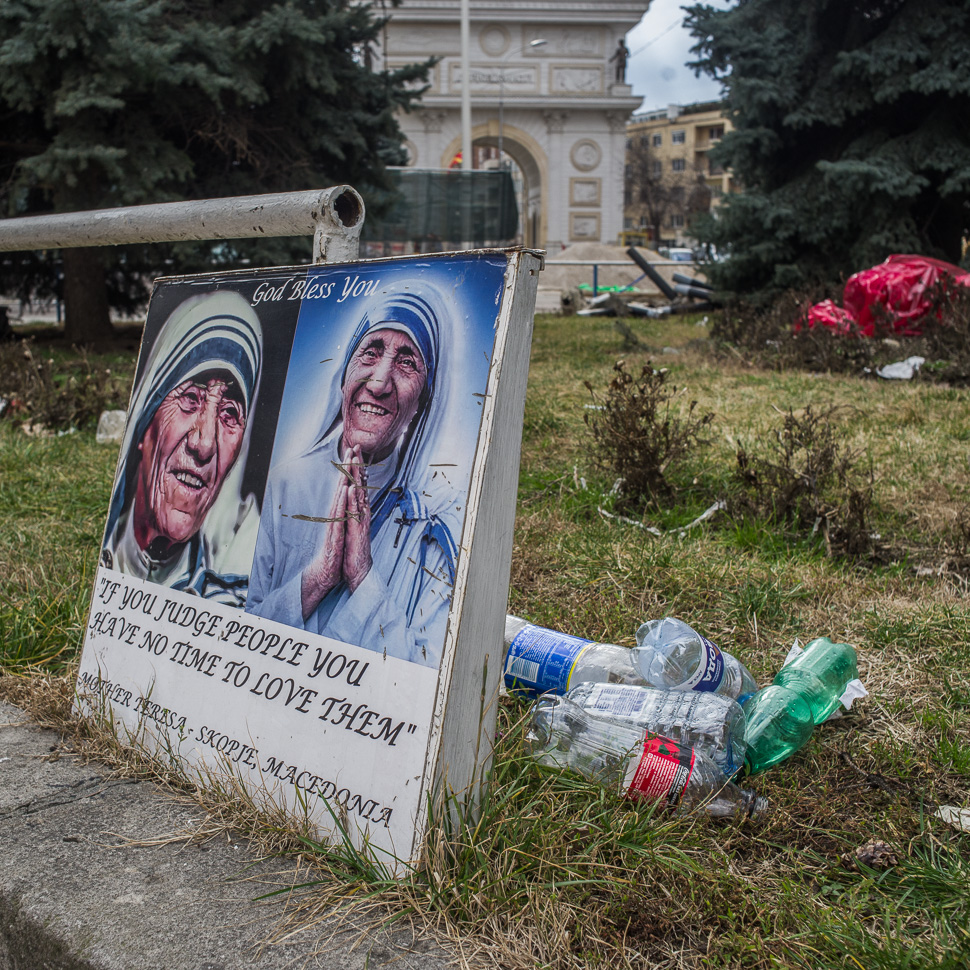 |
| Skopje is the hometown of Mother Teresa |
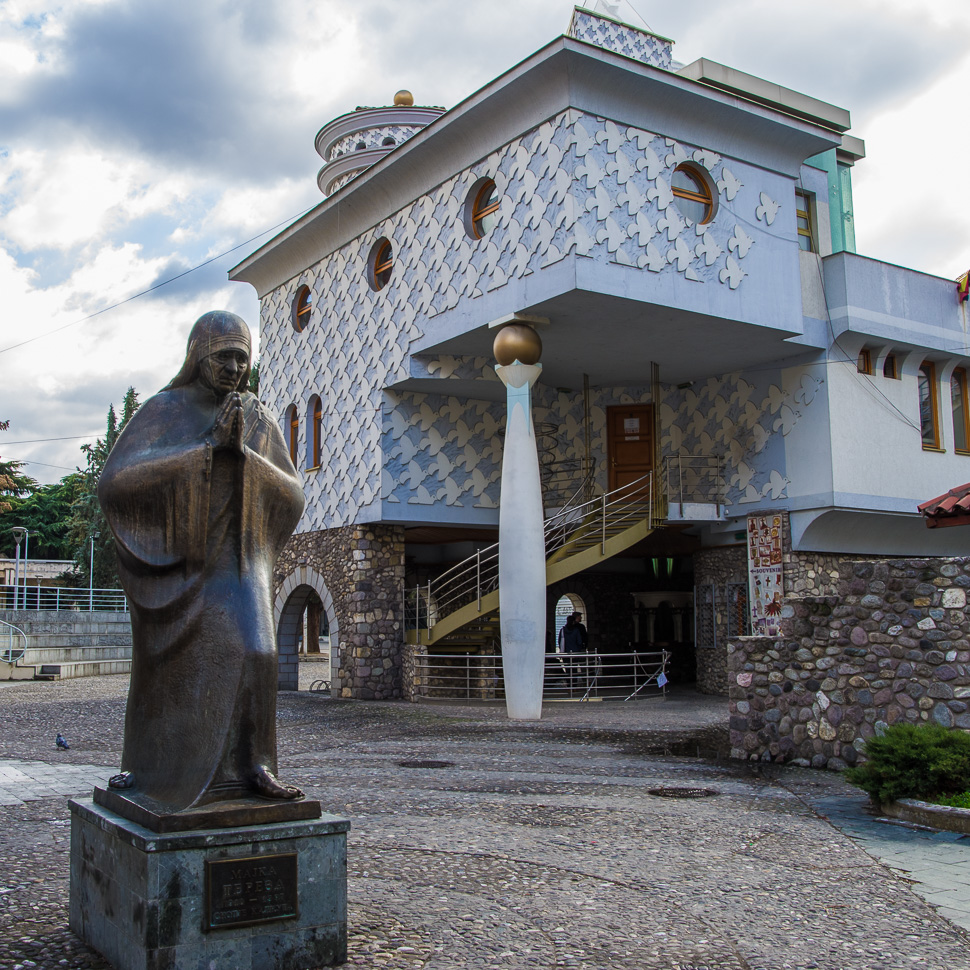 |
| Mother Teresa memorial building |
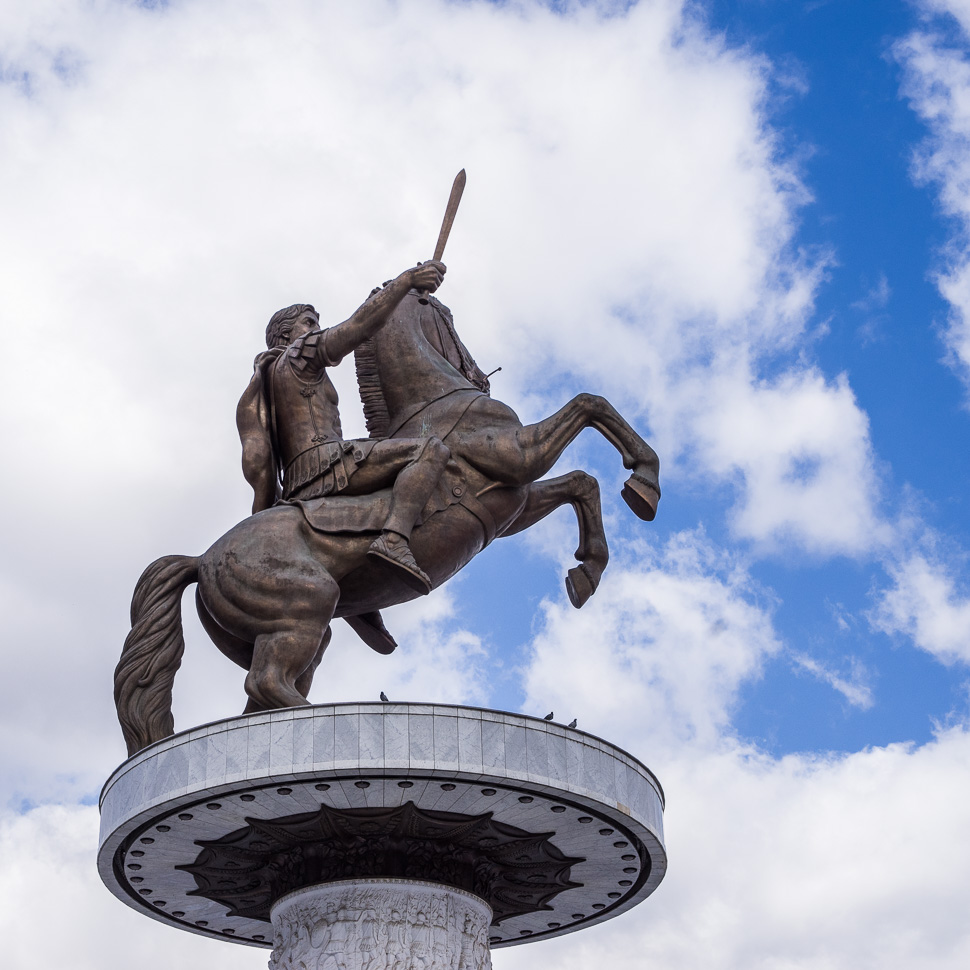 |
| Alexander the Great – the most famous Macedonian |
Perhaps the main symbol of the Skopje 2014 project (see below) is the Warrior on a Horse statue and fountain in the centre of Macedonia Square. It is typically thought to depict Alexander the Great, though it is not officially named after him.
“Alexander” was completed in 2011 to commemorate 20 years of the independence of the Republic of Macedonia. It is 14,5 m tall and sits on a 10 m high column which consists of three large ivory sections, each separated by a thinner bronze ring. The column stands in a fountain. At the base of the column are 8 bronze soldiers, each 3 m tall. There are also 8 bronze lions, each 2,5 m tall, four of which act as part of the fountain, releasing water from their mouths. The fountain also plays music but was covered up in winter. The total cost of the Warrior on a Horse monument is roughly 7.5 million euros.
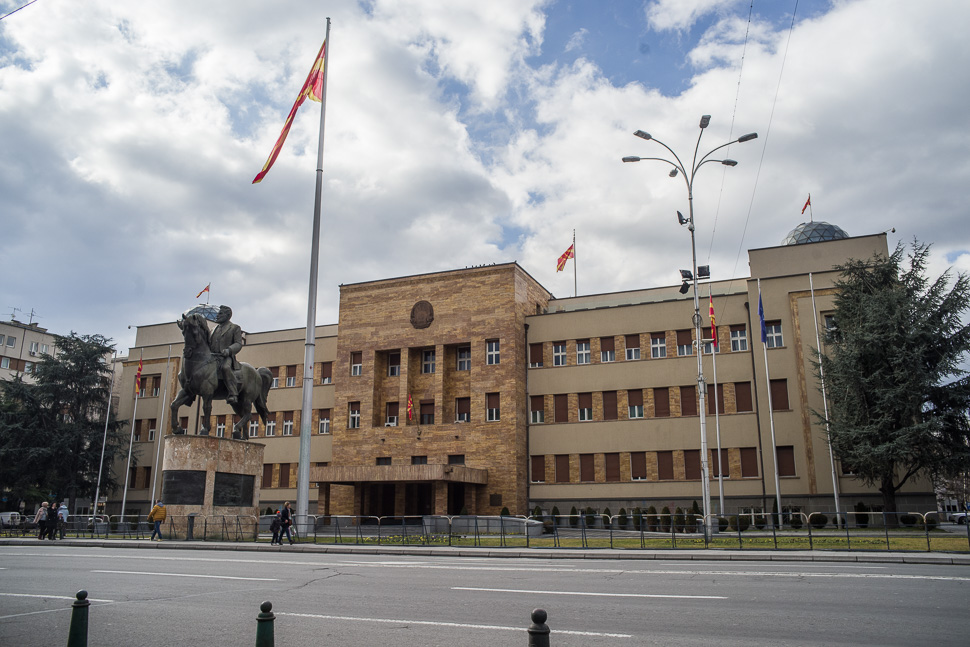 |
| Parliament |
The name of the country had to be changed from Macedonia into North Macedonia after a dispute with Greece, which uses the same name for their northern province. But the Macedonians are not happy with that name, as they are Ethnic Macedonians. When we visited Skopje, the parliament was meeting on that matter, which ended the next day with the dissolution of the government and oncoming new elections. So that’s why we decided to call this country Macedonia!
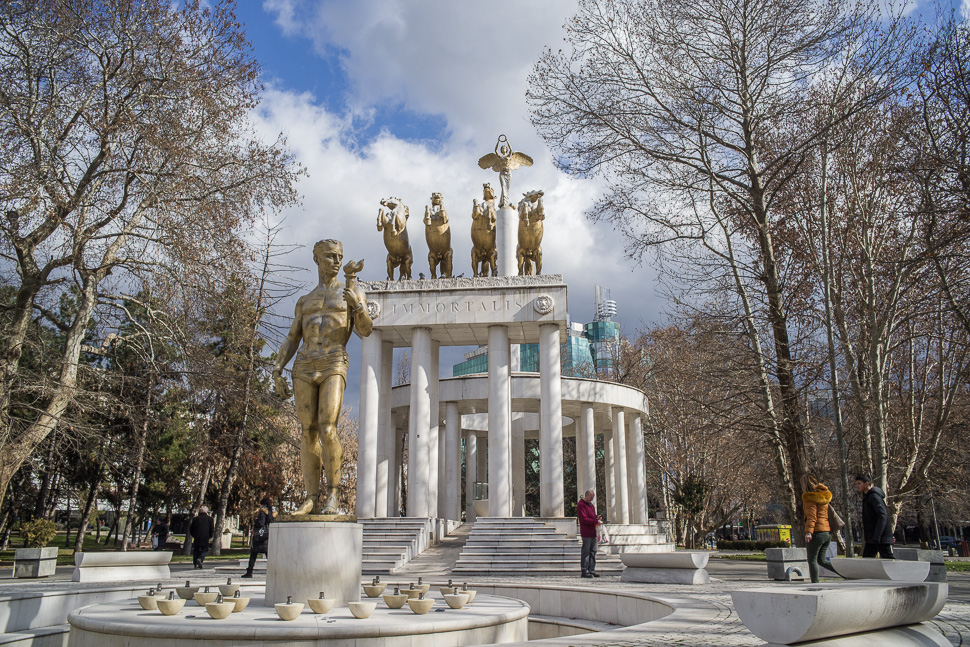 |
| The monument “Fallen Heroes of Macedonia” |
The sculpture of Prometheus in front of something which looks very much like the Brandenburg Gate in Berlin has a special story: First he was nude but had to be “dressed” by the artist after an anonymous female non-governmental organisation filed a complaint. Other rumours have it that the men of Skopje didn’t want their wives to get a wrong idea. Anyway, now Prometheus is wearing his pants, which look very much like a diaper.
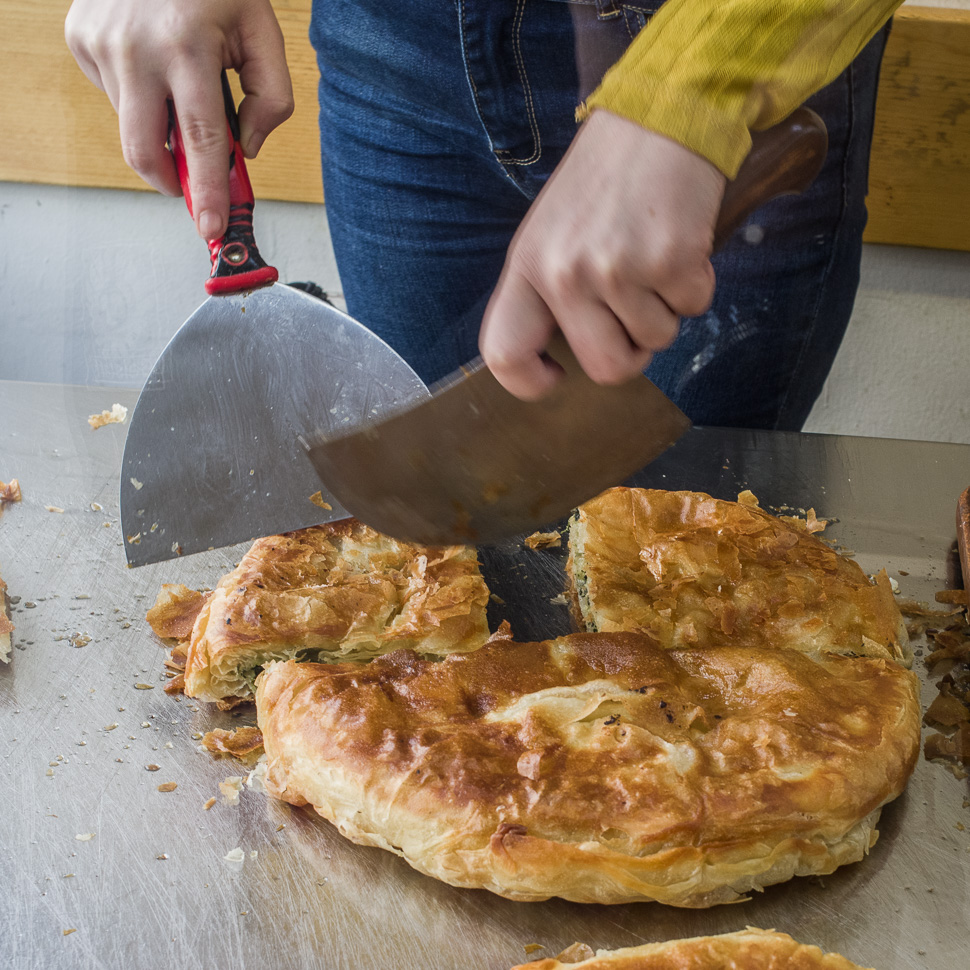 |
| Burek – a typical food sold on the street |
 |
| Vasko let us taste Burek filled with cheese and spinach |
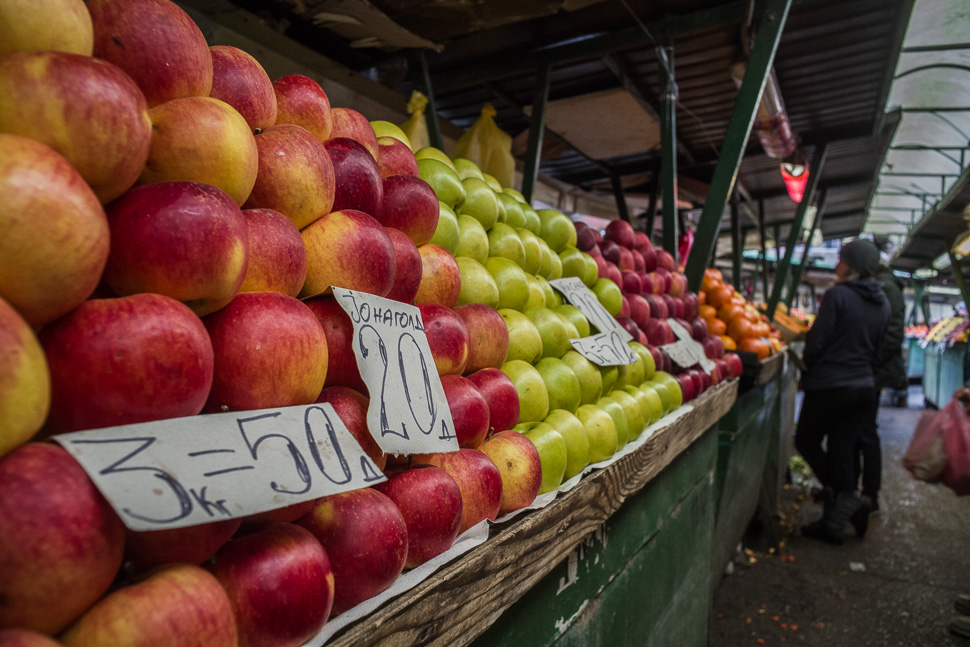 |
| Delicious apples at the market |
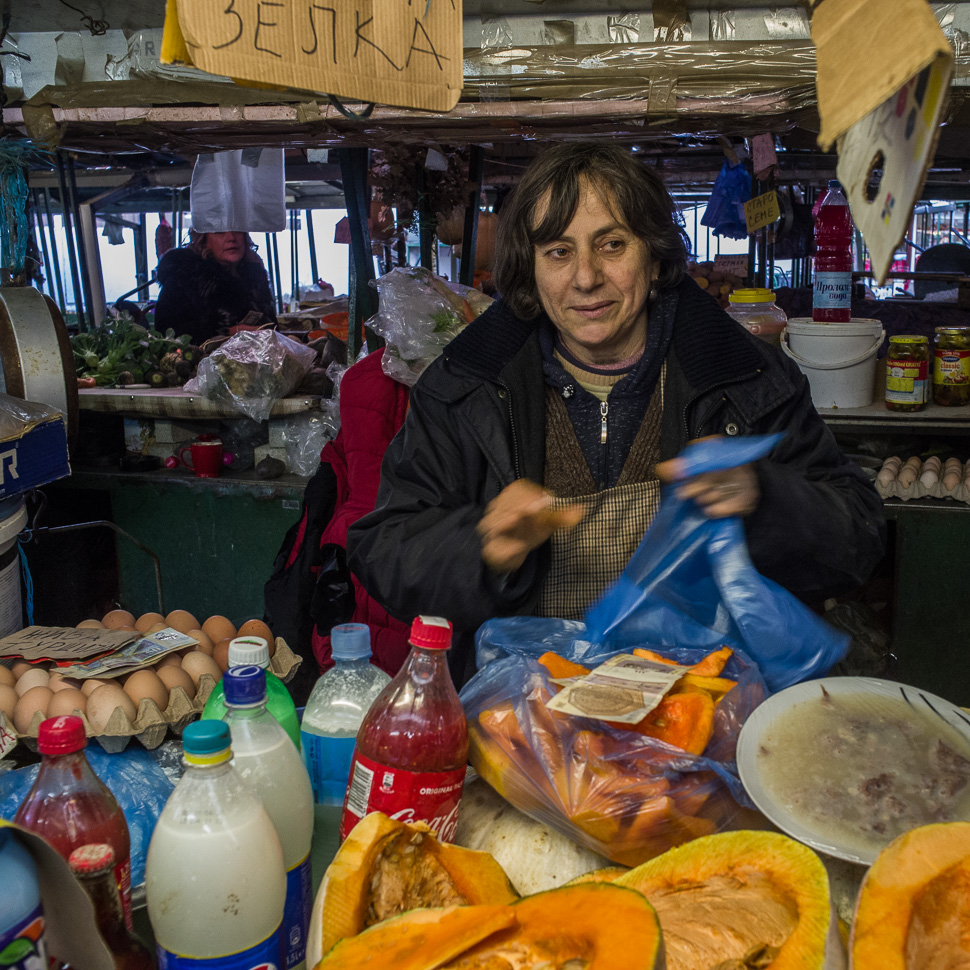 |
| We bought some Ajvar at the market |
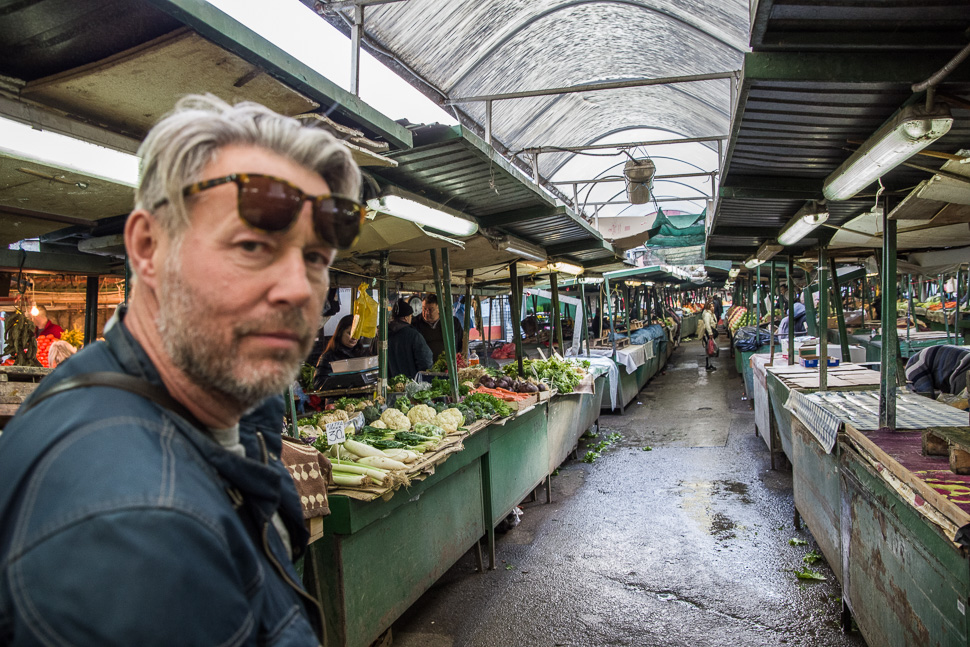 |
| Vendors were already closing their stalls when we came there |
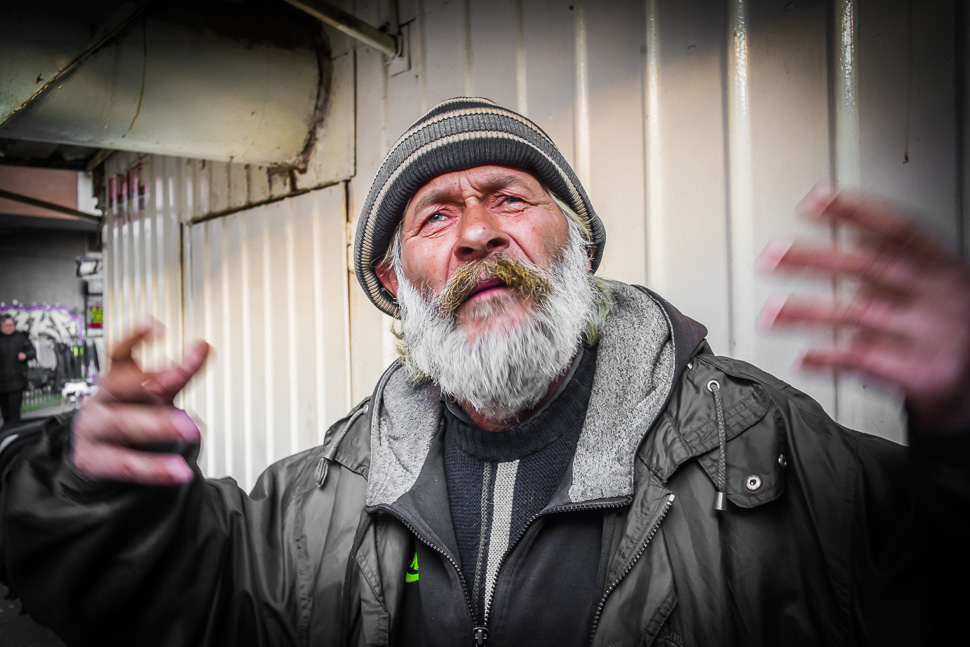 |
| Selling us some mountain tea, he gave us also his opinion on the name “North” Macedonia |
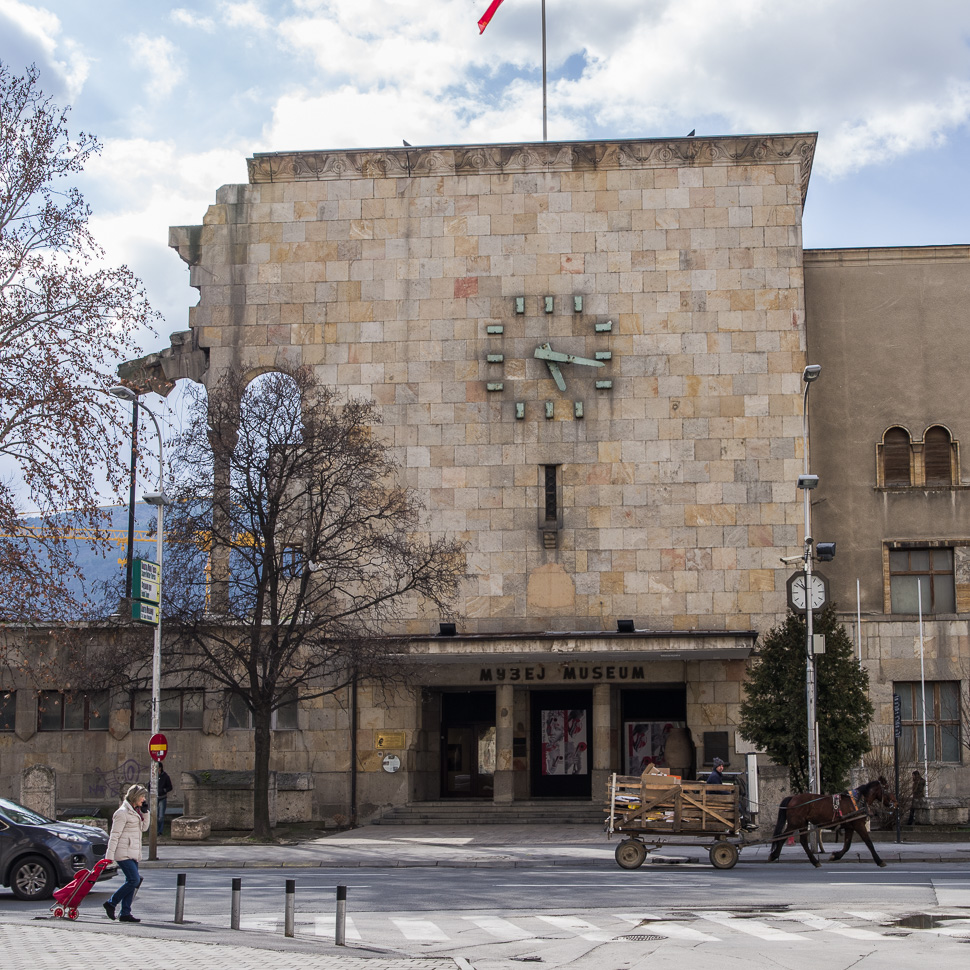 |
| Old train station, now the Museum of the city of Skopje |
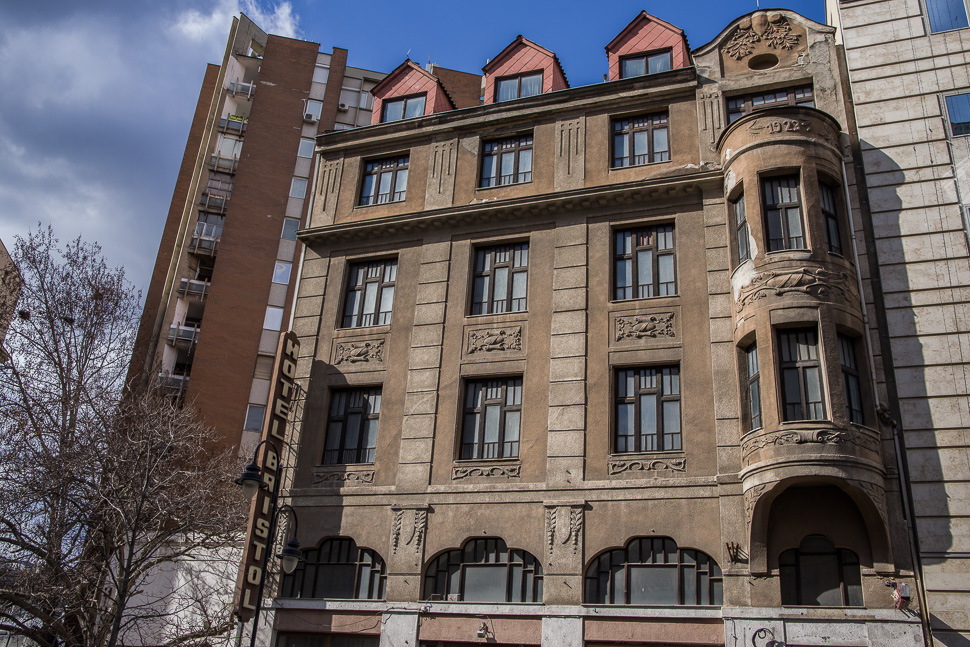 |
| One of the few buildings which survived the earthquake of 1964 |
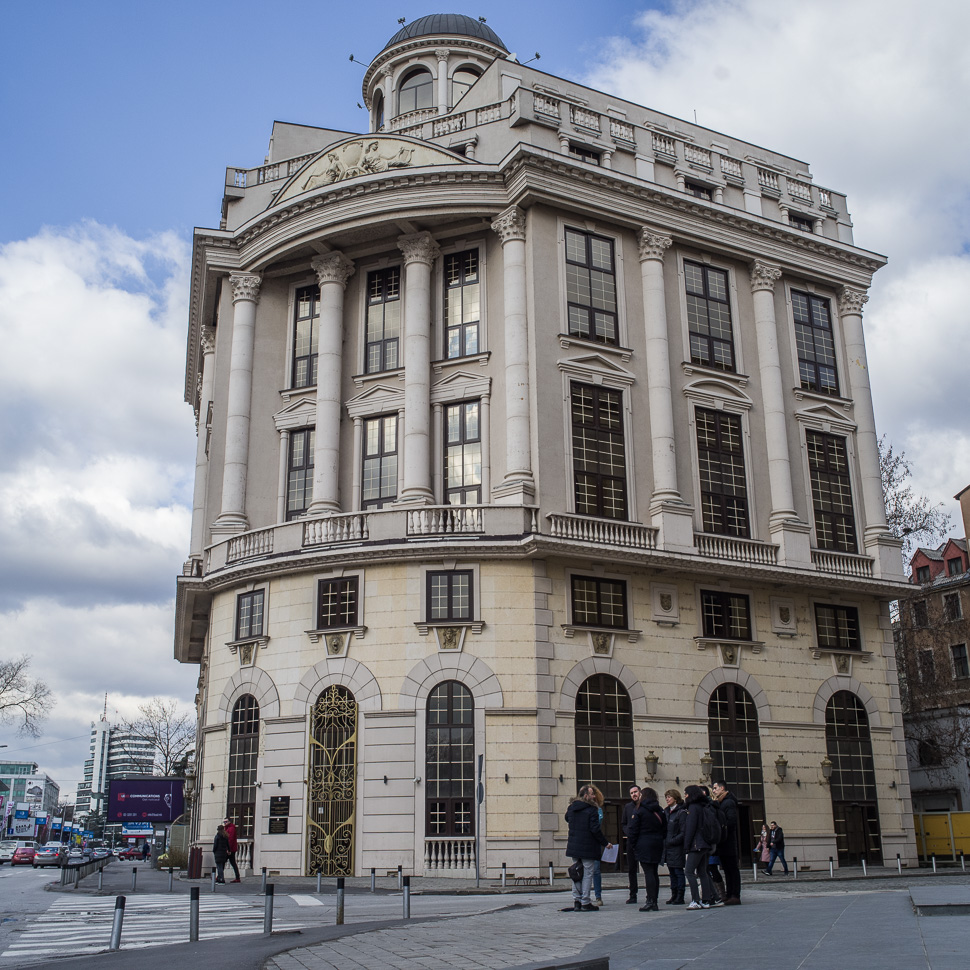 |
| Neoclassicism as a result of Skopje 2014 |
In 1963 an earthquake destroyed approximately 80% of the city, including most of the neoclassical buildings in the central part of Skopje. The rebuilding that followed saw the construction of mostly plain modernist architecture. In 2010 the Macedonian government announced the project Skopje 2014 with the official purpose of giving the capital a more classical appeal. It consisted mainly of the construction of colleges, museums and government buildings, as well as the erection of monuments depicting historical figures from the region of Macedonia. Around 20 buildings and over 40 monuments were to be constructed as part of the project. It has generated controversy for its cost, for which estimates ranged from 80 to 500 million Euros. In the end, 136 structures were built at a cost of more than 700 million.
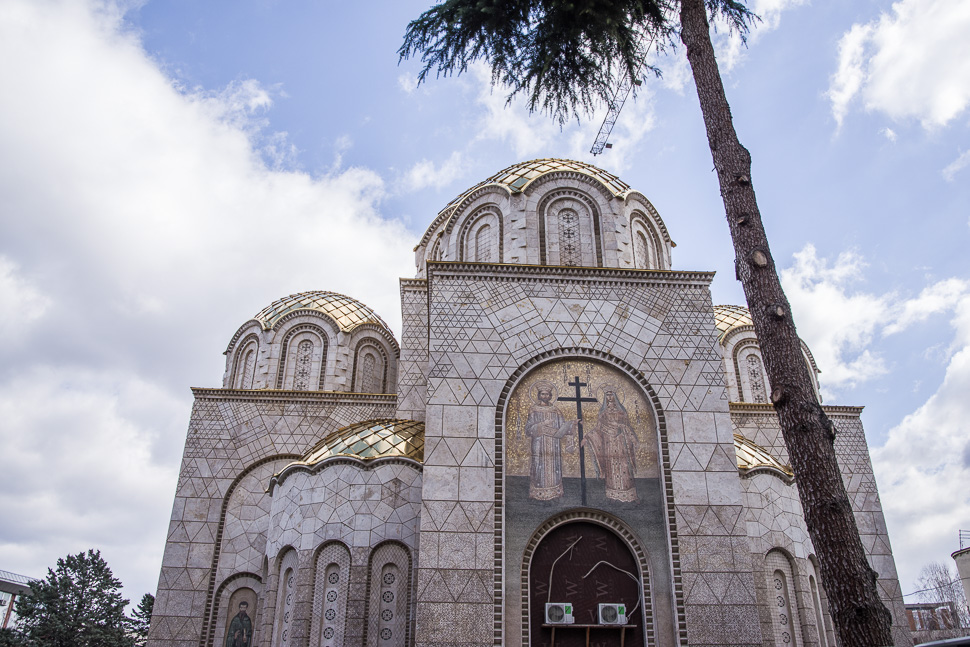 |
| New church still under construction |
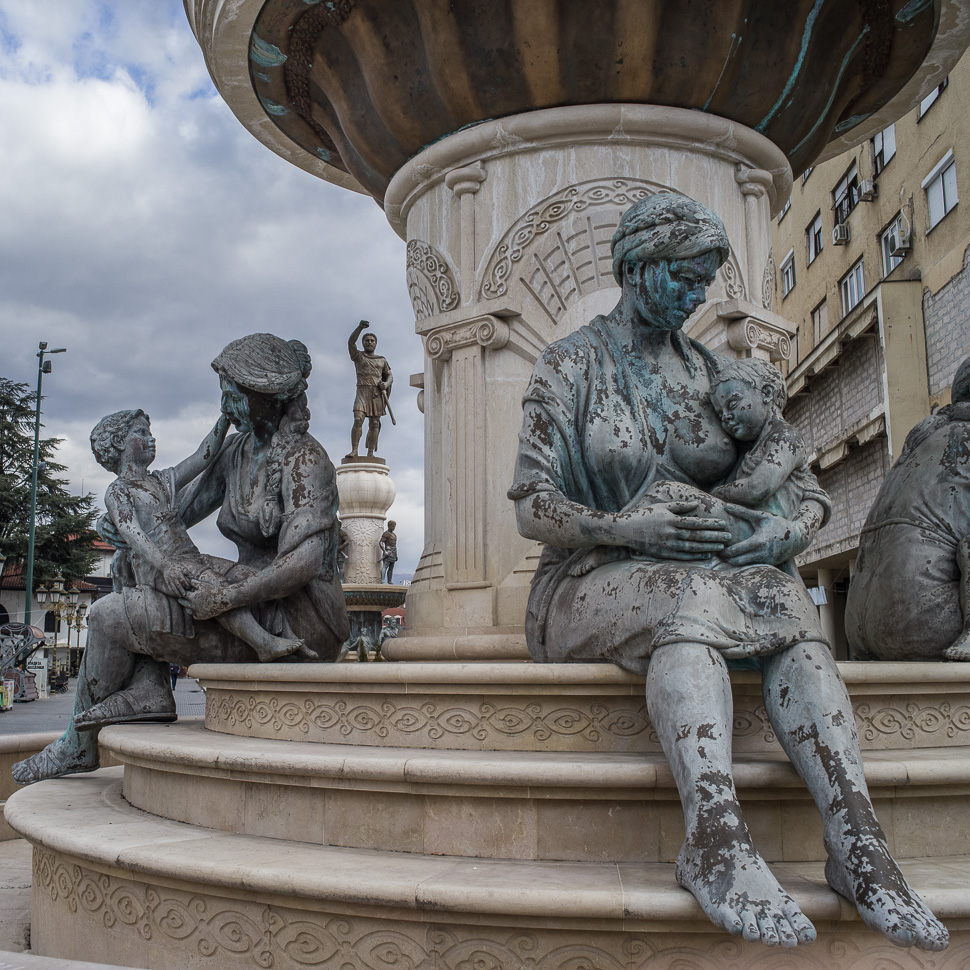 |
| Fountain of the Mothers of Macedonia |
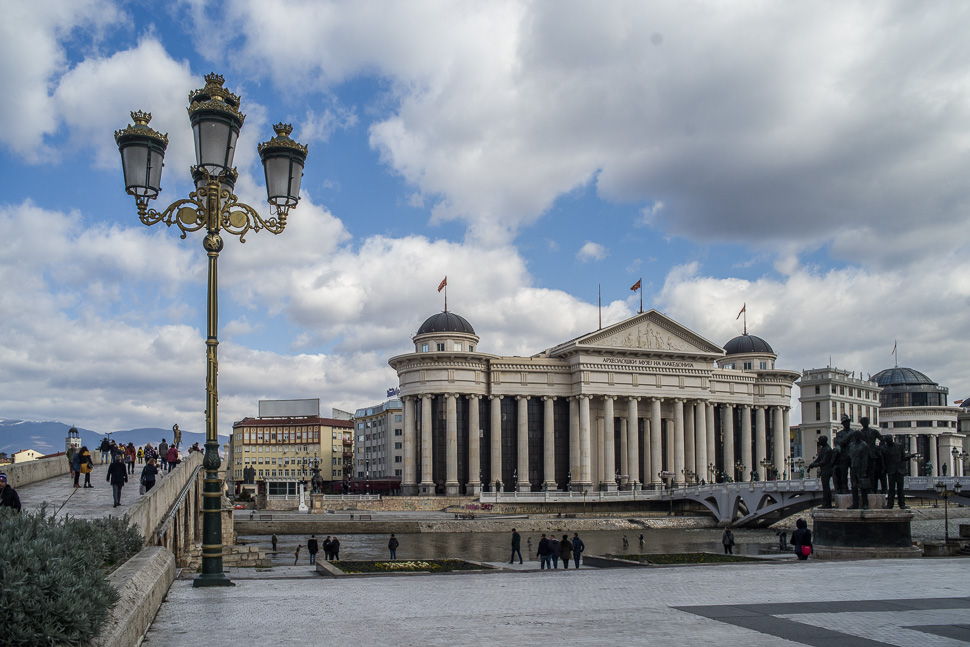 |
| New Archaeological Museum |
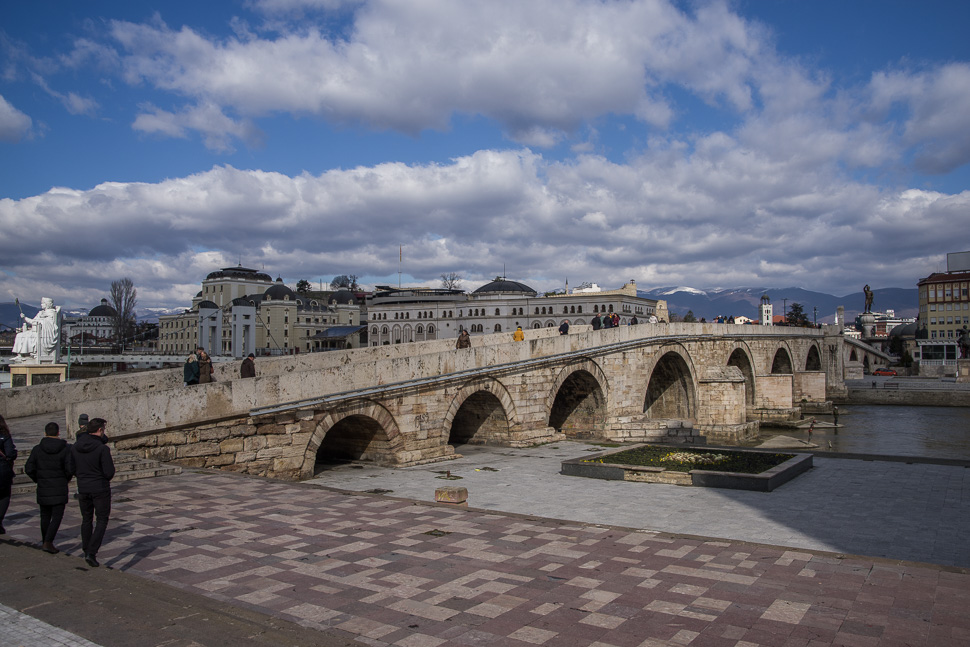 |
| Old stone bridge leading to the bazar |
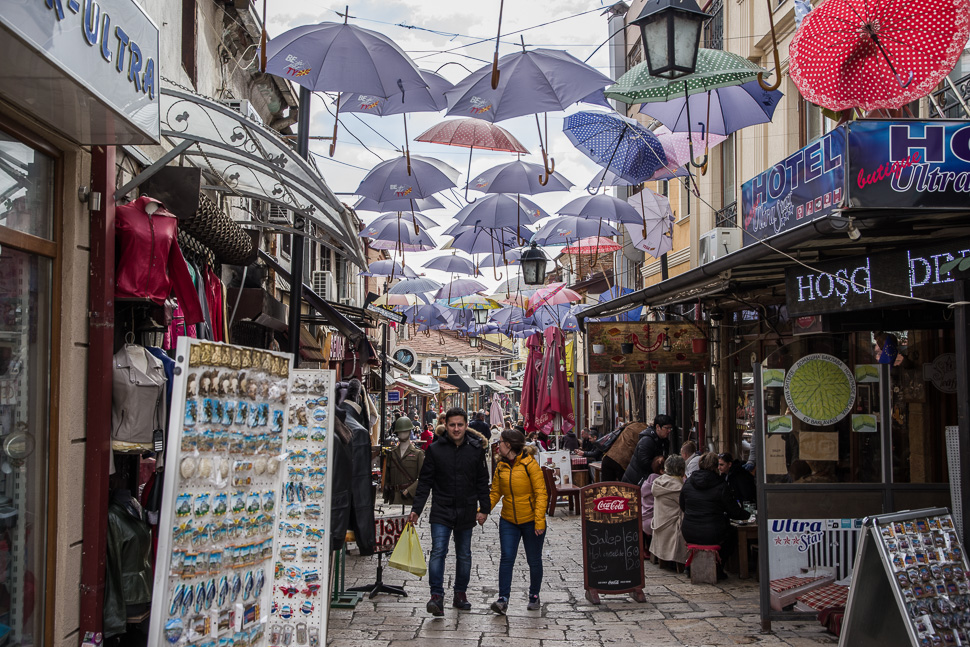 |
| Bazar of Skopje |
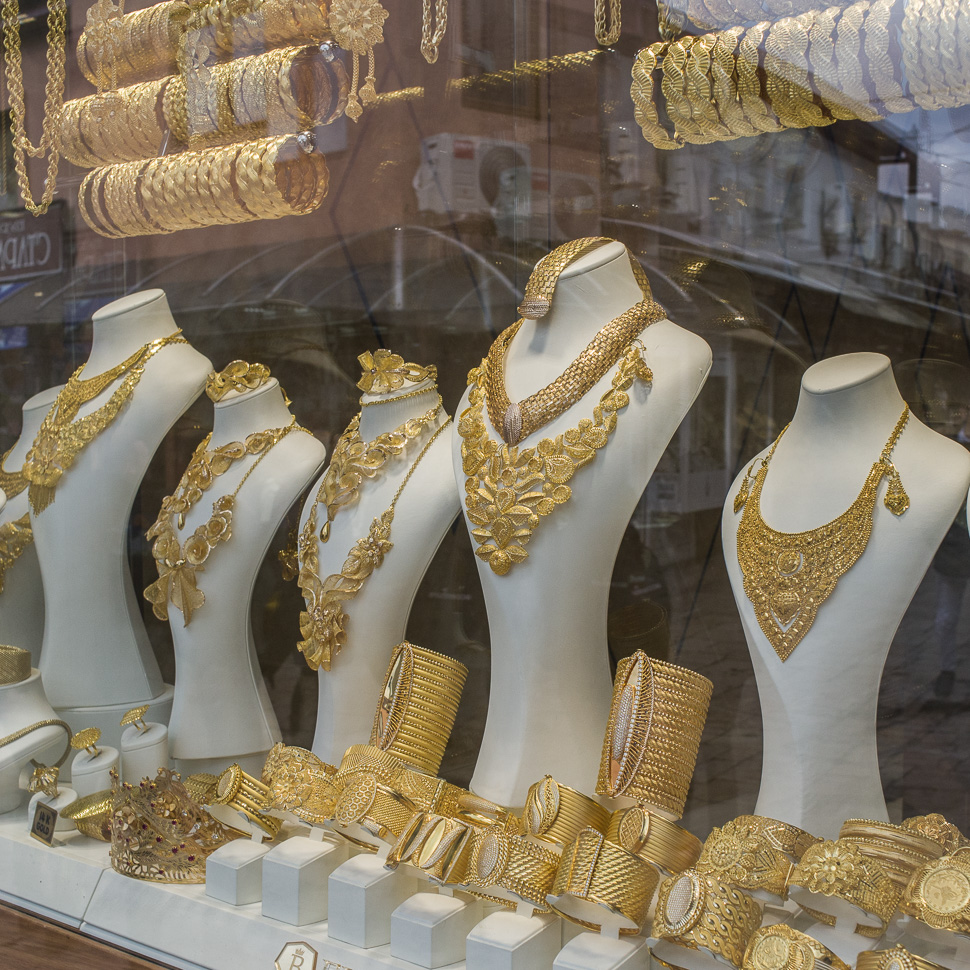 |
| Gold is an important present for any anniversary |
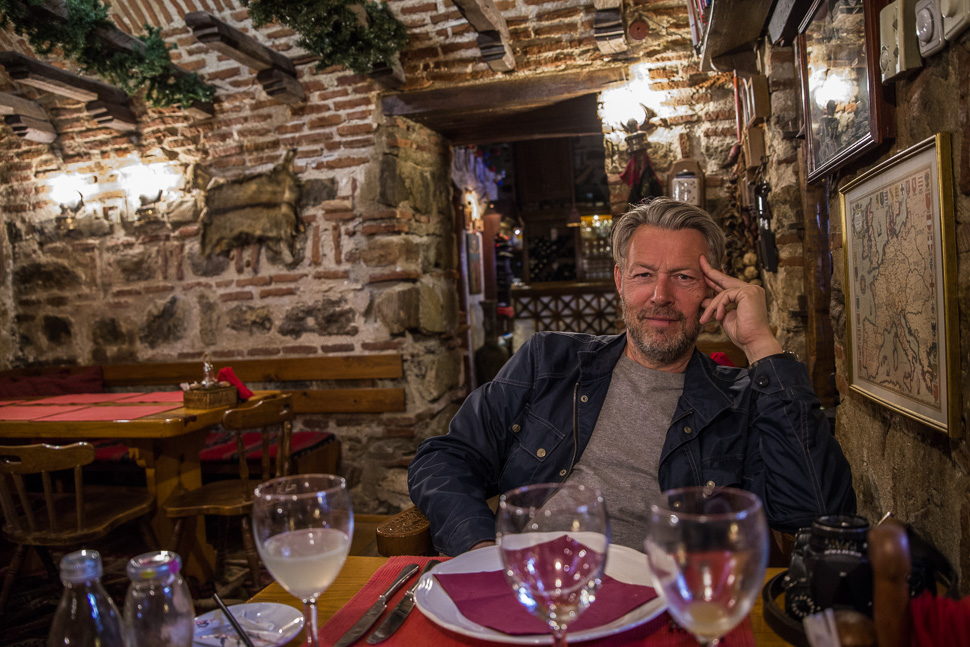 |
| Late Valentine’s lunch at restaurant Pivnica at the old caravansary |
